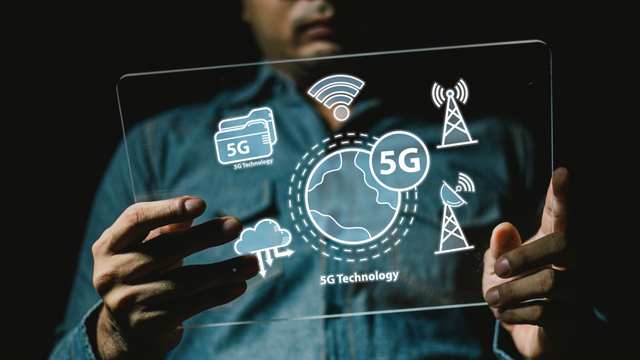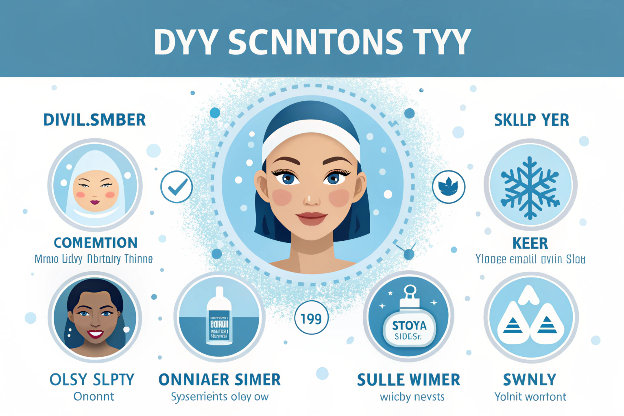Table of Contents
Introduction
In essence, the dominance of wireless waves technology has fundamentally reshaped how we live and interact. Its influence spans across individual lifestyles, societal structures, and global connectivity.
As we navigate this wireless waves, it’s imperative to be conscious of its implications and work towards harnessing its potential for the greater good.

The Dominance of Wireless Technology
In the contemporary landscape, the dominance of wireless technology is unmistakable. From communication to entertainment and even our daily routines, wireless devices have become indispensable in our lives. This shift has revolutionized the way we connect with the world, offering unprecedented convenience and accessibility.
Connectivity Beyond Boundaries
One of the key aspects of wireless waves dominance is the ability to stay connected irrespective of geographical boundaries. Wireless networks, such as 4G and 5G, enable seamless communication and data transfer, fostering a global village where information travels at the speed of light.
Impact on Industries
Industries, too, have adapted to the dominance of wireless technology. From the healthcare sector leveraging wireless devices for patient monitoring to businesses relying on wireless networks for seamless operations, the impact is far-reaching.
The Role of waves in Everyday Life
In our everyday lives, the dominance of wireless technology is evident from the moment we wake up. Smart home devices, wearable fitness trackers, and voice-activated assistants are just a few examples of how wireless technology has seamlessly integrated into our routines.
Challenges and Considerations
However, as we revel in the convenience of wireless dominance, it’s essential to consider the challenges that accompany it.
Concerns about health effects, privacy implications, and the environmental impact of electronic waste are subjects that warrant careful attention.
Striking a balance between enjoying the benefits and addressing these challenges is crucial for a sustainable and responsible technological future.
Growing Concerns about waves and Health Effects
The pervasive use of wireless technology has undeniably brought about unprecedented convenience and connectivity. However, along with these advancements comes a growing concern about the potential health effects associated with prolonged exposure to radiofrequency (RF) and microwave radiation.
Understanding the waves Health Concerns
As wireless devices have become integral to our daily lives, questions have arisen regarding their impact on our well-being.
The electromagnetic fields emitted by these devices, especially when used in close proximity to the body, have raised concerns about possible adverse health effects. These concerns encompass a range of issues, including but not limited to:
1. Cancer Risk:
One of the primary concerns revolves around the potential link between RF radiation and an increased risk of cancer. The classification by the World Health Organization (WHO) and the International Agency for Research on Cancer (IARC) as ‘possibly carcinogenic to humans’ has fueled apprehensions about the long-term consequences.
2. Reproductive Health:
Questions have been raised about the impact of wireless technology on reproductive health, with studies exploring potential associations between exposure to RF radiation and fertility issues. This area of concern is particularly relevant given the proximity of smartphones to the reproductive organs when carried in pockets.
3. Neurological Effects:
Some studies suggest a possible connection between prolonged exposure to wireless radiation and neurological effects, including headaches, sleep disturbances, and cognitive issues. While the evidence is not conclusive, the ongoing research underscores the need for a thorough understanding of the potential risks.
Scientific Studies and Conflicting Findings of waves

The landscape of scientific studies on the health effects of RF radiation is complex and, at times, contradictory. While some studies suggest a correlation between exposure and health issues, others find no definitive evidence of harm.
This conflicting information contributes to the perplexity surrounding the topic, making it challenging for the public to form a clear understanding of the risks involved.
Public Awareness and Debate
Growing concerns about the health effects of wireless technology have fueled a global debate. Individuals, health professionals, and policymakers are actively engaged in discussions about the need for further research, the establishment of clear guidelines, and the development of technologies that minimize potential risks.
Regulatory Responses and Industry Initiatives
In response to these concerns, regulatory bodies are continuously assessing and updating guidelines to safeguard public health. Simultaneously, the technology industry is actively involved in developing and implementing measures to reduce exposure.
These initiatives include the incorporation of safety features in devices, the promotion of hands-free options, and the exploration of innovative technologies with lower emissions.
Balancing Innovation with Safety
As we navigate the era of wireless dominance, striking a balance between technological innovation and ensuring public health is paramount. The rapid evolution of wireless technology requires a proactive approach to address emerging concerns.
This involves ongoing research, transparent communication of findings, and collaborative efforts between regulatory bodies, the scientific community, and the technology industry.
Minimizing Exposure and Safety Measures:
1. Maintaining Distance:
Keeping a safe distance from RF-emitting devices, especially during prolonged use, can reduce exposure.
2. Using Hands-Free Options:
Utilizing hands-free devices, such as headphones or speakerphones, minimizes direct contact with mobile phones.
3. Limiting Screen Time:
Reduced screen time on wireless devices lowers overall exposure. Implementing breaks and using wired connections when possible are effective strategies.
4. Choosing Low-Emission Devices:
Opting for devices with lower emission levels and complying with safety standards contributes to minimizing exposure.
5. Regular Updates and Maintenance:
Ensuring that devices are updated and well-maintained, particularly in the case of appliances like microwaves, reduces the risk of leaks and excessive radiation.
Waves Impacts on Society:

1. Waves Enhanced Connectivity:
The ubiquity of wireless devices has created a hyper-connected society where individuals can communicate, collaborate, and share information effortlessly.
2. Efficiency and Productivity:
Wireless technology has significantly contributed to increased efficiency and productivity, enabling remote work, real-time collaboration, and seamless data access.
3. Entertainment On-Demand:
The availability of wireless streaming services and on-demand content has transformed how we consume entertainment, providing instant access to a vast array of media.
4. Health and Well-being:
Wearable devices and health apps leverage wireless connectivity to monitor physical activity, track health metrics, and provide personalized insights, promoting a proactive approach to well-being.
5. Smart Living:
The integration of smart home devices and IoT technology fosters a lifestyle where homes are responsive to user preferences, enhancing comfort, security, and energy efficiency.
Waves Challenges and Considerations:
1. Health Concerns:
The increased prevalence of wireless devices has led to concerns about potential health effects, particularly related to prolonged exposure to RF and microwave radiation.
2. Privacy and Security:
The interconnected nature of wireless devices raises concerns about privacy and security, necessitating robust measures to protect personal data and sensitive information.
3. Digital Inclusion:
While wireless technology has proliferated in many regions, ensuring digital inclusion and access to these technologies for all remains a challenge.
Overview of Potential Health Risks Associated with waves Wireless Technology
The widespread adoption of wireless technology has undeniably brought about unprecedented convenience and connectivity.
However, along with the benefits, there are growing concerns and ongoing debates about the potential health risks associated with prolonged exposure to radiofrequency (RF) and microwave radiation emitted by these devices.
Here is an overview of the key health risks that have garnered attention from the scientific community and the public:
1. Cancer Risk:
Concerns and Classifications: One of the primary health concerns is the potential link between RF radiation and an increased risk of cancer. The classification by the World Health Organization (WHO) and the International Agency for Research on Cancer (IARC) as ‘possibly carcinogenic to humans’ (Group 2B) has sparked considerable debate and scrutiny.
2. Reproductive Health:
Fertility Issues: Some studies suggest a potential association between prolonged exposure to RF radiation, particularly from mobile phones, and adverse effects on reproductive health. Concerns include decreased sperm quality in men and potential impacts on female fertility.
Wireless Devices in Proximity: Carrying mobile phones in pockets or using wireless devices close to the body may expose reproductive organs to RF radiation, raising questions about the long-term implications.
3. Waves Neurological Effects:
Headaches and Sleep Disturbances: Individuals reporting headaches, sleep disturbances, and cognitive issues have prompted investigations into potential neurological effects of wireless technology.
Electrosensitivity: Some individuals claim to experience electrosensitivity, a condition where exposure to electromagnetic fields, including RF radiation, is believed to cause various symptoms. However, scientific consensus on the existence and causes of electrosensitivity is still debated.
4. Oxidative Stress and Cellular Damage:
Biological Impact: Studies have explored the possibility of RF radiation causing oxidative stress and damage to cellular structures. While some research suggests potential mechanisms, the overall impact on human health remains an area of active investigation.
5. Waves and Children’s Health Concerns:
Developing Bodies: Children, with their developing bodies and brains, are often more vulnerable to potential health effects. The increased use of wireless devices by children has raised concerns about the long-term consequences on their health and development.
Brain Development: Given that the brain is still developing during childhood and adolescence, the impact of RF radiation on cognitive function and brain development is a specific area of interest.
6. Electromagnetic Hypersensitivity (EHS):
Controversial Condition: Electromagnetic hypersensitivity (EHS) is a controversial condition where individuals claim to experience symptoms like headaches and fatigue due to exposure to electromagnetic fields, including RF radiation. Scientific evidence supporting the existence of EHS is limited.
7. Continuous Exposure to waves and Cumulative Effects:
Prolonged Usage: The pervasive nature of wireless technology means continuous and often prolonged exposure to RF and microwave radiation. Questions arise about the potential cumulative effects of long-term exposure over the course of a person’s life.
Unknown Long-Term Consequences: The long-term consequences of continuous exposure to wireless radiation, especially with the evolution of technology and the introduction of new frequencies (e.g., 5G), are areas where scientific understanding is still evolving.
The Imperative for Further Investigation into RF Waves and Microwave Radiation
In the dynamic landscape of research on radiofrequency (RF) and microwave radiation and its potential impact on human health, the need for ongoing and comprehensive investigation is paramount. Here are key reasons why further exploration and study are imperative:
1. Complexity of the Issue:
The multifaceted nature of RF and microwave radiation, coupled with the intricate interplay between electromagnetic fields and biological systems, demands a thorough and nuanced understanding. The complexity of the issue necessitates continued research to unravel the diverse factors influencing potential health impacts.
2. Advancements in Waves Technology:
The rapid evolution of wireless technology, including the deployment of 5G networks, introduces new variables and characteristics of RF radiation. As technology advances, it becomes crucial to reassess and expand research efforts to address the unique challenges and considerations associated with emerging technologies.
3. Unanswered Questions about Waves:
Despite decades of research, numerous questions remain unanswered. Gaps in knowledge persist regarding the long-term effects of RF exposure, potential cumulative impacts, and the intricate mechanisms through which RF radiation may interact with biological tissues. Addressing these gaps requires sustained inquiry.
4. Children’s Health and Vulnerabilities:
Children, with their developing bodies and brains, represent a population of particular concern. Further investigation into the potential health impacts on children is vital, considering their unique vulnerabilities and the increasing prevalence of wireless technology use from an early age.
5. Standardization of Waves Methodologies:
Achieving consistency in research methodologies is a critical challenge. Standardizing protocols for exposure assessment, experimental designs, and outcome measurements enhances the comparability of studies. Further efforts to establish common standards will contribute to the reliability and validity of research findings.
6. Epidemiological Research Challenges:
Epidemiological studies, while invaluable, face challenges such as confounding variables, varied exposure scenarios, and difficulties in establishing causation. Further investigation with improved study designs, larger sample sizes, and refined exposure assessments is essential to strengthen the evidence base.
7. Waves Technological Risk Assessments:
The deployment of 5G technology brings heightened attention to the potential health impacts of increased frequency and density of antennas. Conducting rigorous risk assessments specific to these technological advancements is crucial for understanding and mitigating potential risks associated with advanced wireless networks.
8. Public Health Considerations:
Public health is a central consideration. As wireless technology becomes integral to daily life, exploring the potential health implications is vital for informing public policy, regulatory guidelines, and public awareness campaigns. Continued investigation supports evidence-based decision-making that prioritizes public health.
9. Global Collaboration and Data Sharing:
Collaboration on a global scale facilitates the sharing of data, methodologies, and findings. Joint efforts between researchers, institutions, and countries contribute to a more comprehensive understanding of the global impact of RF radiation. Open data sharing enhances the reproducibility and robustness of research outcomes.
10. Waves Emerging Research Avenues:
As new research avenues emerge, such as investigations into the impacts of RF radiation on the microbiome or the potential synergistic effects with other environmental factors, the scientific community must remain agile. Exploring these emerging areas is essential for staying ahead of the curve and adapting research priorities.
.Recommendations for Minimizing Exposure to RF Waves and Microwave Radiation
As the use of wireless technology becomes ubiquitous, individuals can take proactive steps to minimize their exposure to radiofrequency (RF) and microwave radiation.
While existing safety guidelines provide a framework for acceptable exposure limits, implementing additional precautionary measures can contribute to reducing potential risks. Here are recommendations for minimizing exposure:
1. Maintain a Safe Distance:
Keep Devices Away: When using wireless devices such as smartphones, tablets, or laptops, maintain a safe distance from the body. Avoid prolonged direct contact, especially with sensitive areas like the head.
2. Use Hands-Free Options:
Opt for Headsets or Speakerphones: When making calls, consider using hands-free options such as headsets or speakerphones. This reduces direct contact between the device and the head, minimizing exposure to RF radiation.
3. Limit Mobile Phone Use:
Use Texting or Voice Messaging: Instead of making lengthy phone calls, consider using text messaging or voice messaging when possible. This reduces the duration of direct contact with the device.
4. Choose Low-Radiation Devices:
Check SAR Values: Specific Absorption Rate (SAR) indicates the amount of RF energy absorbed by the body. Choose devices with lower SAR values, as they emit less radiation during use.
5. Avoid Carrying Devices Close to the Body:
Keep Devices in Bags or Purses: Avoid carrying smartphones or other wireless devices in pockets close to the body. Use bags or purses to maintain a greater distance between the device and your body.
6. Minimize Wireless Headsets:
Opt for Wired Headsets: While wireless headsets are convenient, using wired headsets can eliminate additional exposure to RF radiation. Keep wireless headsets at a reasonable distance from the body when in use.
7. Reduce Wi-Fi Exposure:
Turn Off Wi-Fi When Not in Use: When Wi-Fi is not actively needed, consider turning it off. This reduces overall exposure to RF radiation from wireless routers and devices connected to the network.
8. Choose Wired Connections:
Use Ethernet Cables: Whenever possible, opt for wired connections instead of relying solely on wireless networks. This is especially relevant for devices like computers and smart TVs.
9. Limit Children’s Exposure:
Supervise Device Use: Supervise and limit children’s use of wireless devices. Children may be more vulnerable to potential health effects, so taking precautions is particularly important.
10. Create Technology-Free Zones:
Establish Device-Free Areas: Designate certain areas, such as bedrooms, as technology-free zones. Avoid having wireless devices in close proximity during sleep.
11. Stay Informed about 5G Waves Networks:
Understand 5G Technology: Stay informed about the deployment of 5G networks and potential changes in exposure levels. Be aware of the specific characteristics of 5G radiation and how they differ from previous generations.
12. Use Radiation-Blocking Accessories:
Consider Shields or Cases: Explore the use of accessories designed to block or reduce RF radiation. Cases or shields specifically designed for this purpose may offer additional protection.
13. Participate in Public Awareness Programs:
Stay Engaged: Participate in public awareness programs or campaigns that provide information about responsible and safe use of wireless technology. Be an informed advocate for minimizing exposure.
14.Follow Manufacturer’s Waves Guidelines:
Adhere to Device Instructions: Follow the manufacturer’s guidelines for device use. Pay attention to recommended distances and usage patterns specified in user manuals.
15. Encourage Research and Advocacy:
Support Research Initiatives: Encourage and support research initiatives that aim to enhance our understanding of the health impacts of RF and microwave radiation. Advocate for responsible and transparent communication on the topic.
Dispelling Myths About Waves Technology: Unraveling the Truth
In the contemporary world, wireless technology has become an integral part of our daily lives, revolutionizing communication, connectivity, and convenience.
However, amidst the benefits, myths and misconceptions about the potential health effects of radiofrequency (RF) and microwave radiation have proliferated.
It’s crucial to dispel these myths, clarify misunderstood concepts, and provide balanced information to foster a more informed and nuanced understanding of the relationship between wireless technology and health.
A. Dispelling Myths About Wireless Technology:
1. Myth: Wireless Devices Cause Immediate Harm:
Truth: Scientific research indicates that the vast majority of wireless devices, when used within established safety guidelines, do not cause immediate harm. RF radiation emitted is typically at levels well below the safety limits set by regulatory bodies.
2. Myth: All Wireless Technologies Are Equally Harmful:
Truth: Different wireless technologies operate at various frequencies, and their impact on health can differ. It’s essential to recognize that technologies like Wi-Fi, mobile phones, and Bluetooth operate within specific frequency ranges, each with its own safety standards.
3. Myth: Living Near Cell Towers Poses Immediate Health Risks:
Truth:Residential proximity to cell towers does not necessarily correlate with immediate health risks. Regulatory guidelines ensure that emissions from cell towers comply with safety limits, providing a considerable margin of safety.
4. Myth: Electromagnetic Hypersensitivity (EHS) Is Widely Recognized:
Truth: While some individuals claim to experience symptoms they attribute to electromagnetic fields, the scientific community lacks consensus on the existence of Electromagnetic Hypersensitivity (EHS) as a medically recognized condition.
5. Myth: 5G Technology Poses Unprecedented Health Risks:
Truth: The deployment of 5G technology has sparked concerns, but current scientific evidence does not support the idea that 5G poses unique or unprecedented health risks compared to earlier generations of wireless technology.
B. Clarifying Misunderstood Concepts:
1. Misunderstanding: Higher Frequency Means Higher Risk:
Clarification: The frequency of electromagnetic waves alone does not determine their potential health impact. Safety guidelines, such as specific absorption rate (SAR) limits, consider both frequency and power levels to assess potential risks.
2. Misunderstanding: Wireless Technologies Penetrate Deeply into the Body:
Clarification: RF radiation is generally non-ionizing and does not penetrate deep into the body. It primarily affects tissues near the surface, and safety standards are designed to prevent excessive heating of these tissues.
3. Misunderstanding: Non-Ionizing Radiation Is Always Harmless:
Clarification: While non-ionizing radiation, such as RF radiation, does not have enough energy to ionize atoms or molecules, excessive exposure can still lead to heating effects. Safety guidelines aim to prevent these effects and ensure safe usage.
4. Misunderstanding: All Studies Show a Clear Link Between Wireless Technology and Health Issues:
Clarification: Scientific studies on the health effects of wireless technology yield mixed results. While some studies suggest potential associations with certain health conditions, others find no conclusive evidence. It’s important to consider the overall body of research and the quality of individual studies.
C. Providing Balanced Information:
1. Balancing Benefits and Risks:
Information: Acknowledge the undeniable benefits of wireless technology, such as instant communication, enhanced connectivity, and technological advancements. Emphasize that the majority of research suggests that when used within established guidelines, these technologies pose minimal risks.
2. Highlighting Safety Standards:
Information: Provide information about the safety standards and guidelines established by regulatory bodies, including the International Commission on Non-Ionizing Radiation Protection (ICNIRP) and the Federal Communications Commission (FCC). Highlight that these standards are designed to protect public health.
3. Encouraging Informed Choices:
Information: Encourage individuals to make informed choices regarding their use of wireless technology. This includes following safety guidelines, using devices responsibly, and staying informed about advancements in research.
4. Global Perspectives and Collaboration:
Information: Emphasize that the discussion about wireless technology’s health effects is global, involving collaborative efforts between international health organizations, researchers, and industry stakeholders. Global perspectives contribute to a more comprehensive understanding.
5. Ongoing Research and Adaptation:
Information: Highlight that the scientific community continually conducts research to better understand the potential health impacts of wireless technology. Emphasize the importance of adapting guidelines and recommendations based on evolving scientific knowledge.
In conclusion, dispelling myths, clarifying misunderstood concepts, and providing balanced information are essential steps toward fostering a more informed public discourse about the relationship between wireless technology and health. By separating fact from fiction and promoting a nuanced understanding, individuals can make informed choices that maximize the benefits of wireless technology while minimizing potential risks.
Technological Advancements and Future Impacts
A. Evolution of Wireless Technology
The evolution of wireless technology has been nothing short of remarkable, transforming the way we communicate, connect, and experience the world. From the early days of basic radio transmission to the current era of 5G networks, the journey of wireless technology showcases relentless innovation and groundbreaking advancements.
1. Inception of Wireless Communication:
The journey began with the invention of radio waves by Guglielmo Marconi in the late 19th century. The ability to transmit signals wirelessly revolutionized long-distance communication.
2. Birth of Mobile Telephony:
The 20th century witnessed the advent of mobile telephony, with the first-generation (1G) networks launching in the 1980s. This marked the beginning of mobile phones as we know them today.
3. Digital Revolution – 2G to 4G:
The transition from analog to digital communication brought about 2G, 3G, and eventually 4G networks. Each generation brought faster data speeds, improved call quality, and enhanced capabilities, paving the way for a more connected world.
4. Rise of Smartphones and Mobile Internet:
The integration of smartphones with high-speed mobile internet became a defining feature of the 21st century. This era saw the rise of app ecosystems, mobile browsing, and the convergence of various technologies in handheld devices.
5. Introduction of 5G Technology:
The ongoing rollout of 5G technology represents the next frontier. With significantly faster data speeds, lower latency, and increased device connectivity, 5G is poised to revolutionize industries such as healthcare, transportation, and smart cities.
B. Anticipated Advancements and Their Implications
Looking ahead, several anticipated advancements in wireless technology hold the potential to reshape the technological landscape and impact various facets of our lives.
1. Edge Computing and Decentralization:
Anticipation: The integration of edge computing in wireless networks is expected to reduce latency and enhance data processing capabilities closer to the source, enabling real-time applications and services.
2. Internet of Things (IoT) Expansion:
Anticipation: The proliferation of IoT devices is set to grow exponentially. From smart homes and wearables to industrial IoT applications, wireless networks will play a crucial role in connecting and managing diverse devices.
3. Artificial Intelligence (AI) Integration:
Anticipation: Wireless technology will increasingly leverage AI for optimization, predictive analytics, and intelligent network management. This integration is poised to enhance efficiency and adaptability in various applications.
4. Extended Reality (XR) Experiences:
Anticipation: Advancements in wireless technology will contribute to more immersive XR experiences, including augmented reality (AR) and virtual reality (VR), revolutionizing entertainment, education, and training.
5. Quantum Communication:
Anticipation: The exploration of quantum communication holds the promise of ultra-secure and high-speed wireless networks. While in early stages, quantum communication may redefine the boundaries of secure data transmission.
C. Balancing Innovation with Safety
As wireless technology continues its rapid evolution, the need to balance innovation with safety becomes paramount. Striking this balance requires a holistic approach that considers the potential health and environmental impacts of advanced technologies.
1. Safety Standards and Regulatory Compliance:
Balancing Act: The industry must adhere to established safety standards and regulatory guidelines to ensure that technological advancements prioritize user safety and well-being.
2. Continuous Monitoring and Research:
Balancing Act: Ongoing research into the health effects of wireless technologies is essential. Continuous monitoring of advancements allows for the timely adaptation of safety standards based on emerging scientific knowledge.
3. Transparent Communication:
Balancing Act: Clear and transparent communication about the safety features, potential risks, and recommended usage practices is vital. Users should be well-informed to make responsible choices.
4. Privacy and Ethical Considerations:
Balancing Act: The integration of advanced technologies should be accompanied by robust privacy safeguards and ethical considerations. Striking a balance between innovation and respecting user privacy is crucial.
5. Global Collaboration:
Balancing Act: Given the global nature of wireless technology, collaboration between industry stakeholders, regulatory bodies, and health organizations is essential. A unified approach ensures that safety considerations are consistent across borders.
The evolution of wireless technology continues to shape the way we live, work, and connect. Anticipated advancements hold immense potential for positive transformation, but the journey forward requires a delicate balance between innovation and safety.
By fostering collaboration, staying vigilant about emerging research, and prioritizing transparent communication, the future of wireless technology can be one where progress and safety go hand in hand.
Conclusion
In the exploration of the intricate relationship between wireless technology and health, a journey through the evolution, concerns, and advancements has unfolded. Key points emerge from the discourse, highlighting the dynamic nature of this intersection:
The evolution from basic radio waves to the advent of 5G technology showcases a transformative journey marked by innovation and connectivity.
Concerns regarding the potential health effects of radiofrequency (RF) and microwave radiation have spurred regulatory guidelines and safety standards by organizations such as ICNIRP and the WHO.
Anticipated advancements, including edge computing, IoT expansion, AI integration, and quantum communication, present opportunities for profound impacts on diverse sectors.
The imperative to balance technological innovation with safety is underscored by the need for adherence to standards, continuous monitoring, transparent communication, and global collaboration.
FAQs
Q1. Are all electromagnetic fields harmful?
No, not all electromagnetic fields are harmful. The classification by WHO/IARC specifically pertains to RF electromagnetic fields from wireless devices.
Q2. Should I stop using wireless devices altogether?
No need for extreme measures. Following recommended safety guidelines, such as maintaining a safe distance and using hands-free options, can minimize potential risks.
Q3. Do all scientific studies agree on the health effects of RF radiation?
No, there is a range of findings in scientific studies. While some suggest potential risks, others find no conclusive evidence. Ongoing research aims to provide more clarity.
Q4. What advancements are being made to reduce RF radiation exposure?
Industry initiatives focus on developing technologies that reduce emissions without compromising the functionality of wireless devices.
Q5. How can I stay informed about the latest developments in this field?
Stay informed by following reputable health organizations, research studies, and updates from regulatory bodies involved in monitoring wireless technology’s impact on health.





